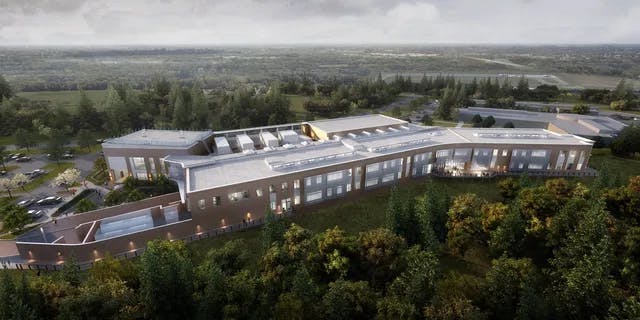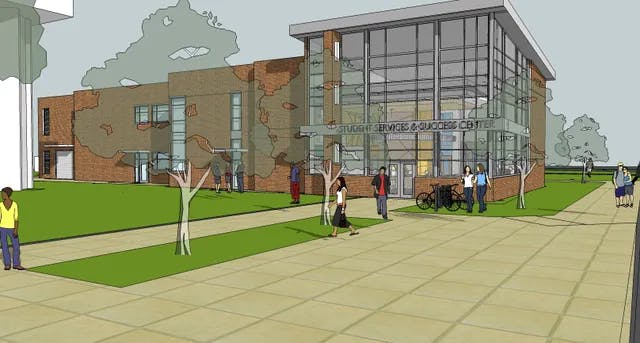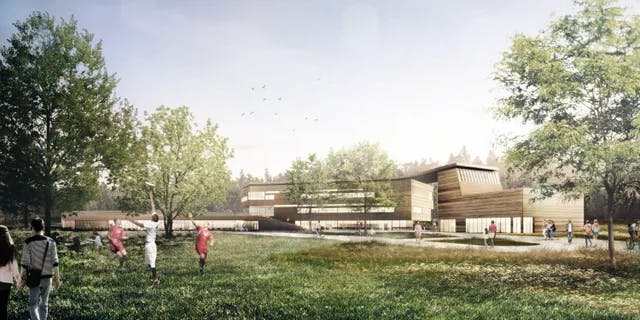Table Of Contents
Table Of Contents
While every project is different, learning what worked on one project helps design a strategy that can work on another one. Below are 3 case studies about strikingly different facade strategies that were selected based on project constraints. TEST YOUR FACADE
1- Extruding Out

The image on the right showcases the integrated lab and classroom building at the Southern Maryland Higher Education Center. Designed by architect Cooper Carry, this project has a significant exposure on the West facade which needs to be tackled by shading strategies. The ASE is much higher than comfortable and to address the glare and heat gain challenges they utilized a range of horizontal fin depths. To add dimensionality to the facade aesthetic, the design team wanted to utilize overhangs and was able to figure out the precise depth of the overhang based on the facade location by running quick studies as shown below. For this project, the latitude studied highlighted that the facades with highest solar exposure to the least are Southwest, West, Southeast, East, Northwest, Northeast, North.
2- Integrated Glass

Some design aesthetics require the building facade to not have too many extrusions. This was the case for the Metropolitan State College Student Success & Services Center designed by Gardner Spencer Smith Tench & Jarbeau. While not having the options to add fins or overhangs, the team was also working with a tight budget. The team saw the option to add frit pattern and modify the visual transmittance of the glass based on the spec. Utilizing a combination of 40% frit pattern and bands of tinted glass, the team was able to remove glare and heat gain from this South and West facing lobby area. In projects with a more flexible budget and buy-in from owners, electrochromic or thermochromic glass can also be a good solution where the aesthetic of the facade is to be uninterrupted.
3- North Factor

For projects in the Northern Hemisphere, glare needs to be studied across all facades except on North-oriented facades. North facades are also sometimes known as the "Free Daylight" facades and are great to bring in useful daylighting without the risk of glare and excessive heat gain. One of the concept schemes for the Living Building Challenge project at the Georgia Institute of Technology optimized its use of glare free North light by maximizing the fenestration on the North facade. Architects Eskew Dumez Ripple and Collins Cooper Carusi collaborated to propose the design for this carbon neutral, day-lit project. The team utilized modeling and data to help inform the locations of the windows for highest daylight, lowest glare and optimal cost.
